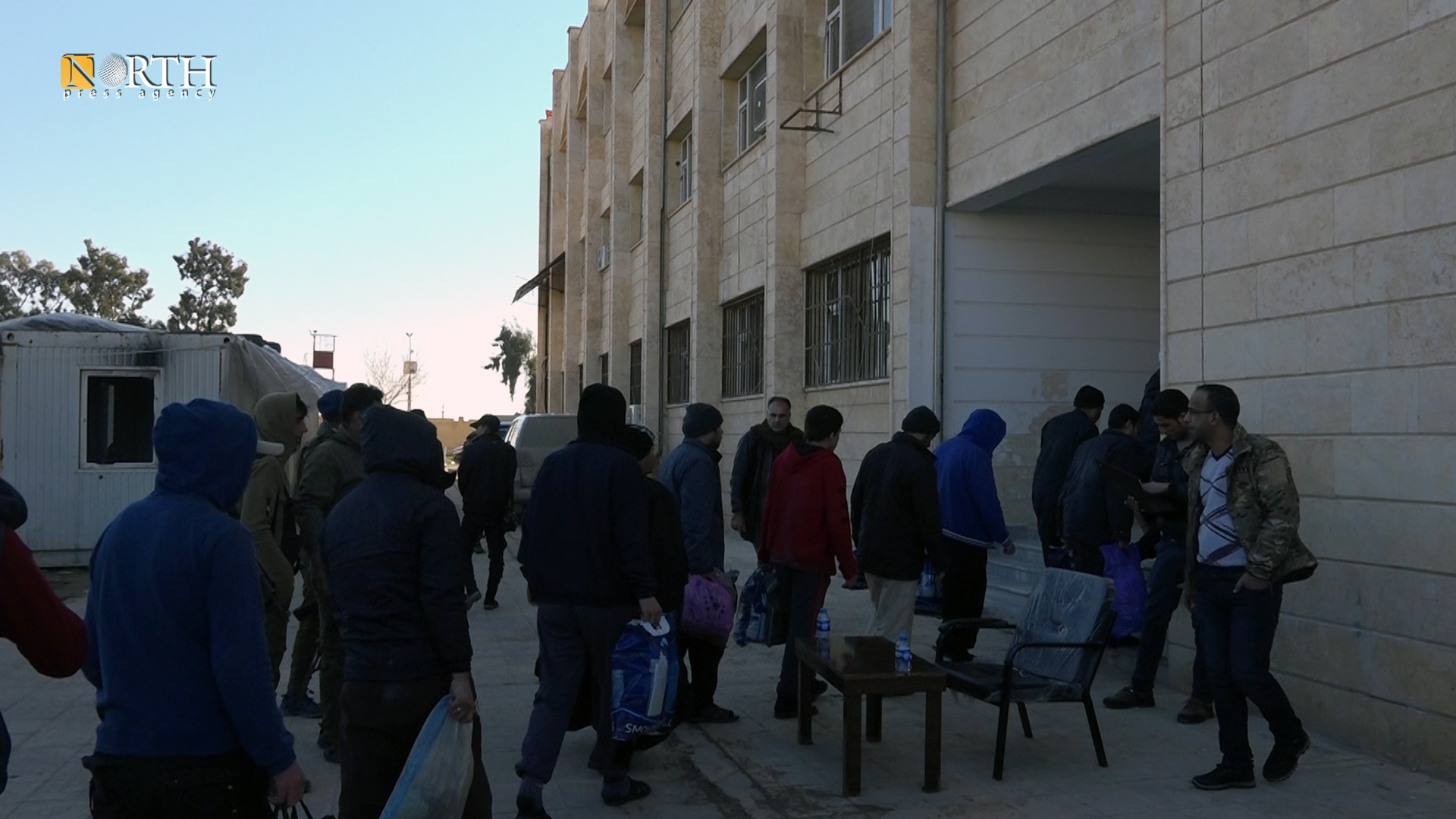Former ISIS members in Syria’s Deir ez-Zor try to integrate in society
DEIR EZ-ZOR, Syria (North Press) – The 35-year-old Hassan al-Abd, a pseudonym for a resident of the eastern countryside of Deir ez-Zor, exits the school with a number of his friends after being accepted in the Education Committee of the Autonomous Administration of North and East Syria (AANES), so he can live a normal life after he was an apostle in the ranks of the Islamic State Organization (ISIS) for three years.
ISIS took power of 95% of Deir ez-Zor in 2014 and then started to spread its ideology described by activists as “extremist”.
Speaking about joining ISIS in 2015, al-Abd said, “I wanted to implement God’s law on the earth, but I did not realize that they made it only a cover.”
“I made public addresses, urged youth to join the ranks of ISIS and fight apostates and atheists” as the leaders told them. “The number of those who joined ISIS is countless.” al-Abd described his work as an apostle.
Mute reality
Concerning the period he spent being ISIS, the man thinks it was sufficient to discover their “delusion”. The majority of what they applied was “terrorism rather than a true Islamic project,” as he said.
“ISIS members labeled every one against them as an infidel. They convinced the youths that paradise would be the award for those who commit suicide operations. They permitted for themselves what they forbidden for the others.”
The man learned their true reality, yet he could not demobilize from them. “I was afraid of reprisals if I did,” he added.
In March 2019, ISIS defeat was declared by the Syrian Democratic Forces (SDF) after fierce battles between the two took place. Consequently, ISIS was ousted from its last stronghold of Syria’s eastern town of Baghouz.
Al-Abd exploited the period the battles got violent and he, his wife, and his three children went out of Baghouz and headed to Shuhail town in the eastern countryside of Deir ez-Zor. He remained there with his family until ISIS defeat was declared.
Al-Abd disguised for a while. Later, he returned home where he stayed for two months. Then he was arrested after intelligence information confirmed he was involved with ISIS, according to him.
Al-Abd was imprisoned for a year in al-Kasrah town, east of Deir ez-Zor during which he underwent multiple investigations. Afterwards, he was released when tribal dignitaries in the region guaranteed him.
Since October 2020, the Executive Council of the Autonomous Administration of North and East Syria (AANES) issued a decision that Syrians ISIS members in prisons and in Hawl Camp to be released but according to guarantees of tribal figures and few specific conditions.
In accordance with the decision concluded between the SDF and tribal dignitaries, members who joined SIS and other military formations to be released after information confirm their hands were not stained with the blood of the civilians or their fellow members, and after it is confirmed that they have joined ISIS and the other military formations just to sustain their families.
A notable man in the eastern part of Deir ez-Zor told North Press that 141 detainees who got out of Hawl Camp were charged of joining or dealing with ISIS.
New opportunity
After he was set free, the man began to think of living in peace, but the looks of his surroundings, the reluctance of his neighbors to visit him or talk to him and treating his family badly, as children stopped playing with his children was a major obstacle to him.
“Some people, who were released with me, left the area to avoid the society judgments.”
Through a voice record, the co-chair of the Social Affairs Committee in the eastern region, Ghanem al-Nazaa, told North Press that they are working to count the number of families leaving prisons and camps through the local councils in the region.
“After the final census, their files will be studied to provide them with psychological and material support, in coordination with the organizations operating in the region,” al-Nazaa said.
“Specialized committees will be identified to review their demands. We want to supervise them to keep them away from extremist ideas, and to try to integrate them into society again,” al-Nazaa added.
Suleiman Saleh, a resident of the town of Baghouz, east of Deir ez-Zor, suffers from unemployment, as he used to sell bread to ISIS members during the battles between ISIS and the SDF.
After the siege, he was forced to go out with his family, so he was arrested on charges of collaborating with ISIS and transferred to Hawl Camp, as he said.
The Hawl Camp east of Hasakah, is a house for about 15,300 families in total of 56,000 individuals including 2,423 families of ISIS detainees or those killed, who hail from over 60 countries.
Hawl Camp is also known as a “ticking time bomb” due to the presence of extremists of ISIS wives and children, and tens of thousands of their supporters in a camp sometimes described as “the most dangerous camp in the world”.
The man found his house completely destroyed, after leaving the camp following a decision by the AANES Executive Council to take out the Syrian families wishing to leave, so he was forced to rent a house.
Although the residents avoided dealing with him because of the “stigma of ISIS”, as he put it, his cousins always sat with him, until he gradually managed to return to his previous life as his children returned to school.
“Our house were a haven for us,” he added indicating that he does not have another shelter, and needs to rebuild it.
Saleh called on the AANES to find solutions for the residents who left the camp and returned to find their houses destroyed.

